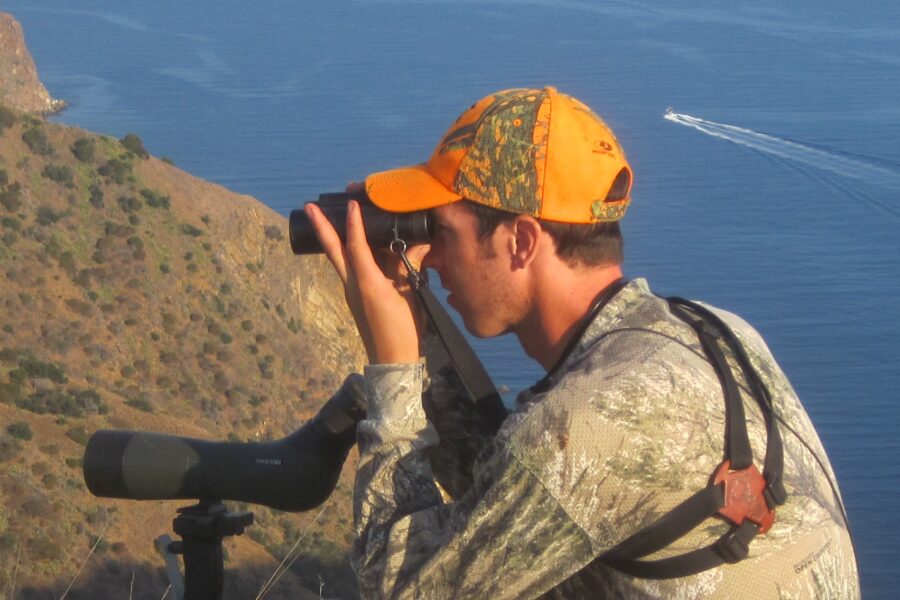Climate Takes Center Stage at Symposium
Conservation, NewsLearnings from California Islands Symposium directly support the strategy behind the Catalina Island Restoration Project.
More than 600 conservation practitioners, managers, researchers, and decision-makers gathered in Ventura, Calif., in early November 2023 for the 10th California Islands Symposium. This inter-island meeting provided the opportunity for conservationists to learn from each other’s experience with common challenges and goals, and discuss current research. Day one of the symposium focused on climate change. Learnings from it directly support the strategy behind the Catalina Island Restoration Project.
“Even though we can observe climate change happening in real time, there is still an enormous amount of uncertainty,” said The Nature Conservancy Island Biologist Lara Brenner. The dilemma extends beyond California, with climate change requiring strategic thinking across the globe. She asked the question, “how can we collectively reshape our conservation values to meet these challenges?”
Dr. Daniel Swain from University of California Los Angeles Institute of the Environment and Sustainability began the conversation with a look at hydroclimate volatility. He explained that California is unique because “during the period of the year where plants and animals need water most – which includes humans – the water is least available because it’s falling at the time of year where there is the least natural demand for water.”
Simply put, demand for water is highest precisely at the point when it is least available.
Overall, looking at averages is not enough when considering California. The state currently experiences many very dry and very wet calendar years. While 2023 was a very wet year on average, the year preceding it was one of the driest on record. Data suggests that we can expect an increase in this sort of “hydroclimate whiplash.”
“The impact is not going to look remotely like the climate we’ve seen historically,” said Swain. “We care about the extremes. We care about the droughts. We care about the floods.”
A good example of the potential impact of this whiplash occurred in December 2017 and January 2018, where the Thomas Fire devastated a dry Ventura, only to be followed the next month while the fires was still smoldering by rains that cause debris flows in Santa Barbara County.
“Climate change has arrived,” said Swain. “This is not something in the future tense anymore, it is an observed reality in the present.”
The challenge is learning how to effectively and equitably co-manage the increasing risks of water scarcity and overabundance.
“The kinds of intervention that I think are really promising are increasingly nature-based solutions,” added Swain.
Restoring Catalina’s chaparral habitats by working to reverse habitat type conversion from invasive annual grasses is a nature-based solution that will help mitigate the impacts of both fire during dry seasons and erosion during wet years. The Catalina Island Restoration Plan increases the resilience of the Island in an increasingly uncertain future.
Rachel Clemesha from the Scripps Institution of Oceanography spoke about how fog and low clouds provide an essential source of moisture and shade for the California Islands during warm seasons. An increased percentage of chaparral on Catalina’s landscape, shifting more closely to the historic ratio, would allow for increased collection of precipitation on leaves that drips down – literally and figuratively – onto the landscape. This sort of capitalization of the area’s coastal low clouds and fog just doesn’t happen as effectively in invasive grass monocultures.
Dr. Max Moritz, UC Cooperative Extension Wildfire Specialist, touched on management decisions on fire-prone landscapes. Though there are very few fires on the islands compared to fires on the mainland, island fires have the potential to be devastating to island communities and species.
“When I talk to people about climate change adaptation, I feel a bit like a catastrophist,” he said. “One could imagine because islands are small, under the right circumstances – the right string of drought years, the right wind conditions – one could imagine a whole island burnover.”
This vulnerability necessitates decisive protective actions.
The Catalina Island Restoration Plan prioritizes management and mitigation actions not only for Catalina’s most vulnerable species and habitats but impacts the Island in its totality by increasing biodiversity health.
Support Catalina’s biodiversity today.

